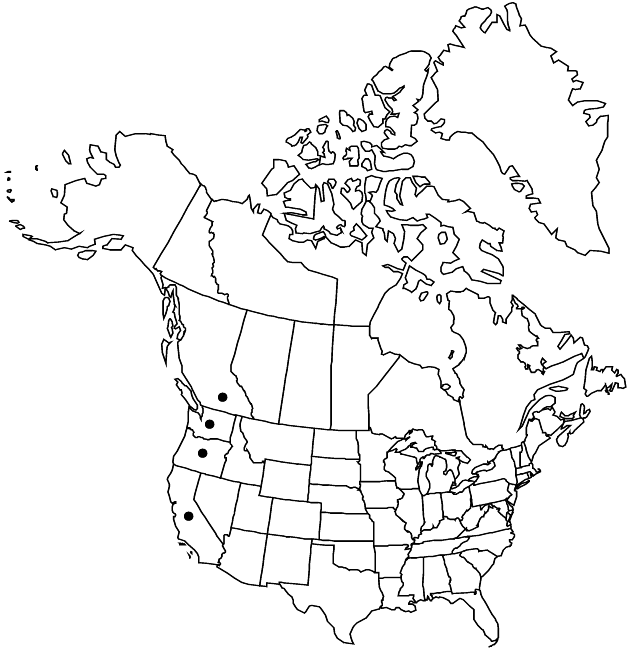Difference between revisions of "Symphyotrichum chilense"
Phytologia 77: 277. 1995.
FNA>Volume Importer |
imported>Volume Importer |
||
| (2 intermediate revisions by 2 users not shown) | |||
| Line 8: | Line 8: | ||
}} | }} | ||
|common_names=Common California or Pacific aster | |common_names=Common California or Pacific aster | ||
| + | |special_status={{Treatment/ID/Special_status | ||
| + | |code=E | ||
| + | |label=Endemic | ||
| + | }} | ||
|basionyms={{Treatment/ID/Basionym | |basionyms={{Treatment/ID/Basionym | ||
|name=Aster chilensis | |name=Aster chilensis | ||
| Line 56: | Line 60: | ||
|publication title=Phytologia | |publication title=Phytologia | ||
|publication year=1995 | |publication year=1995 | ||
| − | |special status= | + | |special status=Endemic |
| − | |source xml=https:// | + | |source xml=https://bitbucket.org/aafc-mbb/fna-data-curation/src/2e0870ddd59836b60bcf96646a41e87ea5a5943a/coarse_grained_fna_xml/V19-20-21/V20_1196.xml |
|tribe=Asteraceae tribe Astereae | |tribe=Asteraceae tribe Astereae | ||
|genus=Symphyotrichum | |genus=Symphyotrichum | ||
Latest revision as of 19:59, 5 November 2020
Perennials, 40–100(–120) cm, colonial or cespitose; long-rhizomatous. Stems 1–5+, ascending or erect, glabrous or hirsute. Leaves thin, margins entire, apices usually acute, faces glabrous or sparsely puberulent; basal withering by flowering, petiolate, blades (linear-)oblanceolate to obovate, 30–200 × 4–40 mm, bases attenuate, margins entire to finely serrate, apices acute; proximalmost cauline sometimes withering by flowering, sessile, blades broadly to narrowly oblanceolate, 40–150 × 5–30 mm, bases usually ± attenuate or cuneate; distal sessile, blades lanceolate to oblanceolate, 25–90 × 5–30 mm, bases cuneate. Heads in open, paniculiform arrays, some branches at least 20+ cm. Peduncles puberulent, bracts 3–10, lanceolate to elliptic, margins often scabrous to ciliolate. Involucres campanulate, 5–8 mm. Phyllaries in 3–5 series, oblanceolate or oblong (outer) to linear (inner), unequal to subequal (outer usually shorter than inner, if so, lengths less than 3 times widths), bases scarious (outer) less than 1/2 or sometimes wholly foliaceous, inner scarious, margins eciliate or ciliolate, green zones oblanceolate to obovate or linear (innermost), apices (outer) obtuse, (inner) acute, faces glabrous or puberulent. Ray florets 15–40; corollas violet, laminae 9–15 × 1.5–2.5 mm. Disc florets 35–60+; corollas yellow, 4–8 mm, lobes triangular, 0.5–1 mm. Cypselae brown, cylindric to obovoid, not compressed, 3.5–4.5 mm, 2–4-nerved, faces hairy; pappi white to tawny, 4–8 mm. 2n = 48, 64, 96.
Phenology: Flowering Jul–Sep.
Habitat: Grasslands, salt marshes, coastal dunes and bluffs, coastal grasslands and scrub, open disturbed habitats in evergreen and Pacific coast coniferous forest
Elevation: 0–500 m
Distribution

B.C., Calif., Oreg., Wash.
Discussion
Symphyotrichum chilense is restricted to coastal habitats from southwestern British Columbia to central California. It is almost entirely coastal in Oregon, Washington, and southern British Columbia, where it is mainly hexaploid (2n = 48). In Oregon, where it is sympatric with S. subspicatum, the latter is mainly duodecaploid (2n = 96). The distinction does not hold in British Columbia, however, where S. subspicatum is both 2n = 48 and 96, and where S. chilense is less common (G. A. Allen 1984). The species was erroneously thought by Nees to occur in Chile. The plants named Aster chilensis var. medius Jepson are hybrids of S. chilense and S. lentum.
Selected References
None.